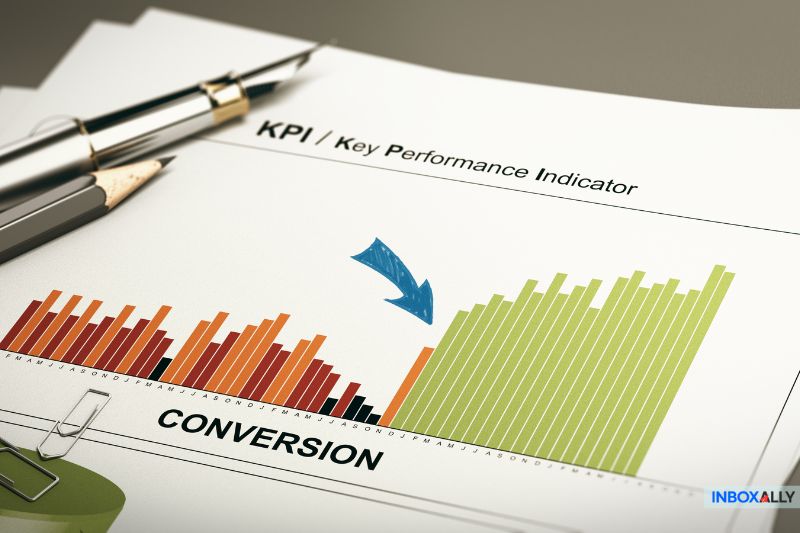The internet is overflowing with content—so much so that 57% of it is now AI-generated or machine-translated, according to a study from Amazon Web Services. AI is learning from itself, creating a cycle where content gets recycled, repackaged, and, in some cases, watered down.
But here’s some good news: Not all AI content is bad. When used the right way, AI can actually make what you read better. More personal, more relevant, and more engaging.
Nowhere is this more powerful than in email marketing. Our inboxes are stuffed with mass-produced, soulless emails, but AI writing can help brands break through the clutter by crafting emails that feel like they were written for a real person.
Not just another [First Name] plug-in, but messages that get what you need, offer something useful, and land in your inbox at just the right moment.
So how do you use AI to make email marketing more human, not less? Let’s take a look…
Why “Personalized” Emails Still Feel Generic (And How AI Fixes That)
Marketers and sales teams love to talk about personalization. They add your name to the subject line, reference your last purchase, maybe even throw in a “We thought you’d love this!” for good measure.
And yet, most of these emails still feel… generic.
You know the ones.
“Hey [First Name], check this out!”
Same template. Minor tweaks. Mass send. And what happens? People stop paying attention.
Sprinkling in a name in an email won’t cut it anymore— Personalization has to be about making an email feel like it was written for you and only you. And right now, most brands aren’t pulling that off (even though they’re definitely trying!).
Why “First Name Personalization” Falls Flat
People can tell when an email isn’t truly personalized. They know when an offer doesn’t match their interests. They sense when a brand is talking at them instead of to them. And the moment an email feels impersonal, it’s one swipe away from the trash.
Here’s what’s missing: context.
- If someone abandoned a shopping cart, don’t just remind them—show them why that item is worth buying.
- If a SaaS user hasn’t logged in for a while, don’t just say “We miss you”—reference exactly what they were working on last.
- If a subscriber clicks on a product but doesn’t buy, don’t send a blanket discount—send recommendations based on what they browsed.
This is where AI writing tools make personalized outreach interesting.
How AI Makes Personalization Feel Personal
AI-powered email platforms analyze behavior, past interactions, and even predicted intent to create messages that resonate.
Now, imagine this:
A user visits a sneaker store and browses running shoes but doesn’t buy. Instead of sending a boring “We miss you!” email, an AI-powered system:
- Knows they spent extra time looking at lightweight trainers.
- Recognizes they’ve bought products from the same brand before.
- Wait for the right moment to follow up.
- Sends an email suggesting a similar pair—plus real reviews from runners with the same preferences.
Now that’s what you can call relevant.
Unlike most cold email templates, this feels like a well-timed nudge from a helpful salesperson.
That’s the difference between “insert first name” marketing and AI-powered personalization that works.
AI Is Learning! (And That’s the Game-Changer)
Most marketers still see AI as a glorified assistant. It speeds up email creation, helps with segmentation, and maybe even writes a simple blog post. But while AI does all that, its real power lies in something far more valuable: it learns.
Every email sent, every open, every click, every ignored message—it all feeds into a system that continuously refines itself. Simply put AI is improving and that’s what separates it from other tools.
The More AI Interacts, the Smarter It Gets
Traditional email marketing is mostly trial and error—A/B tests, subject line tweaks, and hoping the next campaign performs better. AI recognizes patterns and adapts on the fly.
- If a subscriber never clicks on discount offers but responds to product education emails, AI dials back the promos and turns its focus to value-driven messaging.
- If a user always opens emails in the evening, AI schedules future emails to land right when they’re most likely to engage.
- If a certain phrase in a subject line consistently leads to higher open rates, AI applies that insight across future campaigns.
It’s dynamic, evolving, and a little eerie (more on that later)
From Generic Motivation to Hyper-Relevant Engagement
Let’s assume you run a fitness app. A typical email campaign could send every user the same motivational message—”Stay active! Keep going!” Not bad, but AI takes a completely different (and better) approach:
- Tracks real engagement – It knows when a user last logged a workout and what type of exercise they did.
- Adapts messaging – Instead of a generic “keep going” email, an inactive user might get:
- “It’s been a few days since your last workout—ready to jump back in?”
- “You crushed last week’s cardio! Want to try a strength session next?”
- Optimizes timing – If a user always works out at 7 AM, AI sends their email at 6:45 AM with a personalized pre-workout tip.
These personalized emails feel natural and intuitive. Instead of feeling like they’re receiving a mass blast, users feel like they have a personal fitness coach nudging them at just the right time.
AI keeps getting smarter—but that matters only if your emails are reaching your audience. If poor deliverability is holding you back, InboxAlly gives you the engagement signals you need to land in the inbox every time. Try it out with a free demo.
The “Creepy” Line: How Far Is Too Far in AI Personalization?
AI can get really good at personalizing emails. It knows what you browse, what you buy, when you check your emails, and even how long you hover over a product before moving on. But at what point does “personalized messaging” start to feel more like spying?
Most people appreciate relevant emails. What they don’t like is that unsettling “Wait… how do they know that?” feeling.
It’s one thing for an email to say, “Hey [First Name], here’s something you might like.” It’s a whole different story when you get:
- “We saw you checking out this red sweater at 10:42 PM last night—still interested?”
- “You recently visited our pricing page but didn’t sign up. Let’s talk.”
- “Congrats on your second trimester! Here’s a list of baby essentials.” (Yes, this actually happened to someone who hadn’t even told their family yet!)
Some brands have learned the hard way that too much personalization can backfire. What they thought was being clever when, in reality, they just came off as creepy.
Personalization Without the Stalker Vibe
AI doesn’t need to feel intrusive to be effective. The best email personalization feels natural and helpful—not like an over-eager salesperson who remembers too much.
So how do you not overdo it?
- Let behavior shape content, but don’t expose it. Instead of saying, “We saw you looking at this at 10 PM,” try “Popular picks from our winter collection.” Still relevant, just… less creepy.
- Give customers control. Offer clear preferences: “Tell us what you’d like to receive.” A well-personalized email is always better when it’s expected.
- Keep it relevant, not overly predictive. AI can guess what customers might want, but there’s a fine line between helpful and presumptuous.
The best personalization is the one that makes people feel like a brand just gets them without making them wonder if their phone is secretly listening.
The AI Strategies That Drive Conversions
Most marketers hear “email personalization” and think of names, job titles, and purchase history. Basic stuff. But, as we’ve said, that kind of personalization isn’t what drives revenue growth. Context does.
Context means knowing when, why, and how someone engages with your brand—and then sending an email that makes sense right then and there. AI makes this possible by analyzing real-time behavior and delivering hyper-relevant emails that feel like they arrived at just the right moment.
From “Insert Name Here” to Context-Aware Personalization
A subject line with a first name won’t move the needle. But an email that knows what the user wants right now is where AI wins.
Here’s how AI enables behavior-driven personalization:
1. Predictive Send Times
The best email in the world is worthless if it shows up at the wrong time. AI watches and learns when each person opens and clicks—then times future emails accordingly. Some users check emails first thing in the morning, others browse during their lunch break an night owls open emails at midnight.
So instead of blasting everyone at the same time, AI schedules emails for peak times which pretty much guarantees better engagement.
2. Contextual Offers—Not Just “Here’s 10% Off”
Let’s say someone browses a high-end coffee machine on your website but doesn’t buy. A traditional email strategy might offer them sitewide discounts—but AI knows better.
Instead of a generic “10% off” email, AI can:
- Send a specific offer for the coffee machine they viewed.
- Include reviews and social proof from customers who purchased it.
- Highlight a payment plan in case price is an issue.
Now, instead of just another boring sales pitch, it’s an offer based on what matters to that particular shopper.
3. Dynamic Content Blocks (Emails That Update in Real Time)
You’ve probably seen an email that says something like: “Your top Netflix picks this week based on what you just watched.”
Streaming services, eCommerce stores, and even SaaS platforms are already using AI-powered dynamic content that adjusts based on user activity.
- A clothing brand might feature new arrivals based on past purchases.
- A travel site could suggest flights based on recent searches.
- A SaaS platform might adjust onboarding content based on features the user hasn’t tried yet.
These are just a few ways AI transforms sales productivity by making emails relevant the moment they’re opened—and it works!
But what if they never get seen? Conversion starts with engagement, and engagement starts with deliverability—better sender reputation and higher inbox placement. InboxAlly helps make that happen. Book a free demo to learn how.
How AI Helps You Avoid Spam and Get Seen
If your open rates are low, it’s not always because people aren’t interested—it might be because your emails never made it to their inbox.
Internet Service Providers (ISPs) and email platforms use sophisticated filters to decide where an email belongs: inbox, promotions, or spam. They analyze engagement, sender reputation, and content patterns before making that call.
Here, AI helps marketers work with spam filters, not against them.
Spam filters usually flag anything that looks too much like a mass blast. AI makes emails more personal, more relevant, and more inbox-friendly by:
- Writing better subject lines – AI analyzes engagement trends to determine which subject lines lead to opens and which ones get ignored. It tests and adapts based on what worked in the past.
- Optimizing sending frequency – Send too many emails, and you’re flagged as spammy. Send too few and you lose relevance. AI studies recipient behavior and adjusts send patterns based on that to keep you in the sweet spot.
Now, can an AI tool help if your emails are already struggling with deliverability? Sometimes—but nothing beats real user engagement.
InboxAlly improves sender reputation with human interactions that signal to inbox providers your emails belong in the inbox. Cold outreach, large-scale campaigns—whatever you send, InboxAlly ensures it gets seen.
Want your cold emails to finally land where they belong? Sign up for a free demo and see the difference.
Final Thoughts: Are You Ready?
Hope this gave you some insight into AI’s role in email marketing today. It’s not perfect, but the sooner you adapt, the better. And don’t worry—the human touch still matters. What feels right to you is what works best because, in the end, all these AI email personalization tools are trying one thing: to look more human.
If you need help with email deliverability for your next AI-powered email campaign, book a demo and check out InboxAlly‘s solutions right away! Good luck!






